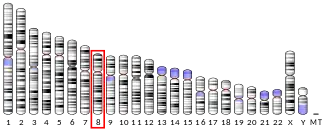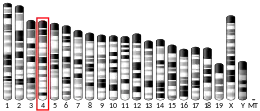| PDP1 | |||||||||||||||||||||||||||||||||||||||||||||||||||
|---|---|---|---|---|---|---|---|---|---|---|---|---|---|---|---|---|---|---|---|---|---|---|---|---|---|---|---|---|---|---|---|---|---|---|---|---|---|---|---|---|---|---|---|---|---|---|---|---|---|---|---|
| Identifiers | |||||||||||||||||||||||||||||||||||||||||||||||||||
| Aliases | PDP1, PDH, PDP, PDPC, PPM2C, PPM2A, pyruvate dehyrogenase phosphatase catalytic subunit 1, pyruvate dehydrogenase phosphatase catalytic subunit 1 | ||||||||||||||||||||||||||||||||||||||||||||||||||
| External IDs | OMIM: 605993 MGI: 2685870 HomoloGene: 31928 GeneCards: PDP1 | ||||||||||||||||||||||||||||||||||||||||||||||||||
| |||||||||||||||||||||||||||||||||||||||||||||||||||
| |||||||||||||||||||||||||||||||||||||||||||||||||||
| |||||||||||||||||||||||||||||||||||||||||||||||||||
| |||||||||||||||||||||||||||||||||||||||||||||||||||
| |||||||||||||||||||||||||||||||||||||||||||||||||||
| Wikidata | |||||||||||||||||||||||||||||||||||||||||||||||||||
| |||||||||||||||||||||||||||||||||||||||||||||||||||
Pyruvate dehydrogenase phosphatase catalytic subunit 1 (PDPC 1), also known as protein phosphatase 2C, is an enzyme that in humans is encoded by the PDP1 gene.[5][6] PDPC 1 is an enzyme which serves to reverse the effects of pyruvate dehydrogenase kinase upon pyruvate dehydrogenase, activating pyruvate dehydrogenase.
Function
Pyruvate dehydrogenase (E1) is one of the three components (E1, E2, and E3) of the large pyruvate dehydrogenase complex. Pyruvate dehydrogenase kinases catalyze phosphorylation of serine residues of E1 to inactivate the E1 component and inhibit the complex. Pyruvate dehydrogenase phosphatases catalyze the dephosphorylation and activation of the E1 component to reverse the effects of pyruvate dehydrogenase kinases.
Pyruvate dehydrogenase phosphatase is a heterodimer consisting of catalytic and regulatory subunits. Two catalytic subunits have been reported; one is predominantly expressed in skeletal muscle, and another one is much more abundant in the liver. The catalytic subunit, encoded by this gene, is the former, and belongs to the protein phosphatase 2C (PP2C) superfamily. Along with the pyruvate dehydrogenase complex and pyruvate dehydrogenase kinases, this enzyme is located in the mitochondrial matrix.[5]
Regulation
Pyruvate dehydrogenase phosphatase is stimulated by insulin, PEP, and AMP, but competitively inhibited by ATP, NADH, and Acetyl-CoA.
Clinical significance
Mutation in the PDP1 gene causes pyruvate dehydrogenase phosphatase deficiency.[5]
References
- 1 2 3 GRCh38: Ensembl release 89: ENSG00000164951 - Ensembl, May 2017
- 1 2 3 GRCm38: Ensembl release 89: ENSMUSG00000049225 - Ensembl, May 2017
- ↑ "Human PubMed Reference:". National Center for Biotechnology Information, U.S. National Library of Medicine.
- ↑ "Mouse PubMed Reference:". National Center for Biotechnology Information, U.S. National Library of Medicine.
- 1 2 3 "Entrez Gene: pyruvate dehydrogenase phosphatase catalytic subunit 1".
- ↑ Lawson JE, Niu XD, Browning KS, Trong HL, Yan J, Reed LJ (Sep 1993). "Molecular cloning and expression of the catalytic subunit of bovine pyruvate dehydrogenase phosphatase and sequence similarity with protein phosphatase 2C". Biochemistry. 32 (35): 8987–93. doi:10.1021/bi00086a002. PMID 8396421.
Further reading
- Piccinini M, Mostert M, Alberto G, Ramondetti C, Novi RF, Dalmasso P, Rinaudo MT (Apr 2005). "Down-regulation of pyruvate dehydrogenase phosphatase in obese subjects is a defect that signals insulin resistance". Obesity Research. 13 (4): 678–86. doi:10.1038/oby.2005.76. PMID 15897476.
- Kimura K, Wakamatsu A, Suzuki Y, Ota T, Nishikawa T, Yamashita R, Yamamoto J, Sekine M, Tsuritani K, Wakaguri H, Ishii S, Sugiyama T, Saito K, Isono Y, Irie R, Kushida N, Yoneyama T, Otsuka R, Kanda K, Yokoi T, Kondo H, Wagatsuma M, Murakawa K, Ishida S, Ishibashi T, Takahashi-Fujii A, Tanase T, Nagai K, Kikuchi H, Nakai K, Isogai T, Sugano S (Jan 2006). "Diversification of transcriptional modulation: large-scale identification and characterization of putative alternative promoters of human genes". Genome Research. 16 (1): 55–65. doi:10.1101/gr.4039406. PMC 1356129. PMID 16344560.
- Hu RM, Han ZG, Song HD, Peng YD, Huang QH, Ren SX, Gu YJ, Huang CH, Li YB, Jiang CL, Fu G, Zhang QH, Gu BW, Dai M, Mao YF, Gao GF, Rong R, Ye M, Zhou J, Xu SH, Gu J, Shi JX, Jin WR, Zhang CK, Wu TM, Huang GY, Chen Z, Chen MD, Chen JL (Aug 2000). "Gene expression profiling in the human hypothalamus-pituitary-adrenal axis and full-length cDNA cloning". Proceedings of the National Academy of Sciences of the United States of America. 97 (17): 9543–8. Bibcode:2000PNAS...97.9543H. doi:10.1073/pnas.160270997. PMC 16901. PMID 10931946.
- Auffray C, Behar G, Bois F, Bouchier C, Da Silva C, Devignes MD, Duprat S, Houlgatte R, Jumeau MN, Lamy B (Feb 1995). "[IMAGE: molecular integration of the analysis of the human genome and its expression]". Comptes Rendus de l'Académie des Sciences, Série III. 318 (2): 263–72. PMID 7757816.
- Lejeune F, Li X, Maquat LE (Sep 2003). "Nonsense-mediated mRNA decay in mammalian cells involves decapping, deadenylating, and exonucleolytic activities". Molecular Cell. 12 (3): 675–87. doi:10.1016/S1097-2765(03)00349-6. PMID 14527413.
- Cameron JM, Maj M, Levandovskiy V, Barnett CP, Blaser S, Mackay N, Raiman J, Feigenbaum A, Schulze A, Robinson BH (Apr 2009). "Pyruvate dehydrogenase phosphatase 1 (PDP1) null mutation produces a lethal infantile phenotype". Human Genetics. 125 (3): 319–26. doi:10.1007/s00439-009-0629-6. PMID 19184109. S2CID 20251714.
- Maj MC, MacKay N, Levandovskiy V, Addis J, Baumgartner ER, Baumgartner MR, Robinson BH, Cameron JM (Jul 2005). "Pyruvate dehydrogenase phosphatase deficiency: identification of the first mutation in two brothers and restoration of activity by protein complementation". The Journal of Clinical Endocrinology and Metabolism. 90 (7): 4101–7. doi:10.1210/jc.2005-0123. PMID 15855260.
- Sugden MC, Holness MJ (May 2003). "Recent advances in mechanisms regulating glucose oxidation at the level of the pyruvate dehydrogenase complex by PDKs". American Journal of Physiology. Endocrinology and Metabolism. 284 (5): E855-62. doi:10.1152/ajpendo.00526.2002. PMID 12676647.
- Kato J, Kato M (Mar 2010). "Crystallization and preliminary crystallographic studies of the catalytic subunits of human pyruvate dehydrogenase phosphatase isoforms 1 and 2". Acta Crystallographica Section F. 66 (Pt 3): 342–5. doi:10.1107/S1744309110003131. PMC 2833053. PMID 20208177.
- Korotchkina LG, Patel MS (Jun 1995). "Mutagenesis studies of the phosphorylation sites of recombinant human pyruvate dehydrogenase. Site-specific regulation". The Journal of Biological Chemistry. 270 (24): 14297–304. doi:10.1074/jbc.270.24.14297. PMID 7782287.
- Stellingwerff T, Spriet LL, Watt MJ, Kimber NE, Hargreaves M, Hawley JA, Burke LM (Feb 2006). "Decreased PDH activation and glycogenolysis during exercise following fat adaptation with carbohydrate restoration". American Journal of Physiology. Endocrinology and Metabolism. 290 (2): E380-8. doi:10.1152/ajpendo.00268.2005. PMID 16188909.
- Ito M, Kobashi H, Naito E, Saijo T, Takeda E, Huq AH, Kuroda Y (Jul 1992). "Decrease of pyruvate dehydrogenase phosphatase activity in patients with congenital lactic acidemia". Clinica Chimica Acta; International Journal of Clinical Chemistry. 209 (1–2): 1–7. doi:10.1016/0009-8981(92)90327-M. PMID 1327585.
- Adams MD, Kerlavage AR, Fleischmann RD, Fuldner RA, Bult CJ, Lee NH, Kirkness EF, Weinstock KG, Gocayne JD, White O (Sep 1995). "Initial assessment of human gene diversity and expression patterns based upon 83 million nucleotides of cDNA sequence". Nature. 377 (6547 Suppl): 3–174. PMID 7566098.
- Caruso M, Maitan MA, Bifulco G, Miele C, Vigliotta G, Oriente F, Formisano P, Beguinot F (Nov 2001). "Activation and mitochondrial translocation of protein kinase Cdelta are necessary for insulin stimulation of pyruvate dehydrogenase complex activity in muscle and liver cells". The Journal of Biological Chemistry. 276 (48): 45088–97. doi:10.1074/jbc.M105451200. PMID 11577086.
- Bonaldo MF, Lennon G, Soares MB (Sep 1996). "Normalization and subtraction: two approaches to facilitate gene discovery". Genome Research. 6 (9): 791–806. doi:10.1101/gr.6.9.791. PMID 8889548.
- Huang B, Gudi R, Wu P, Harris RA, Hamilton J, Popov KM (Jul 1998). "Isoenzymes of pyruvate dehydrogenase phosphatase. DNA-derived amino acid sequences, expression, and regulation". The Journal of Biological Chemistry. 273 (28): 17680–8. doi:10.1074/jbc.273.28.17680. PMID 9651365.
External links
- Pyruvate+Dehydrogenase+Phosphatase at the U.S. National Library of Medicine Medical Subject Headings (MeSH)
This article incorporates text from the United States National Library of Medicine, which is in the public domain.



